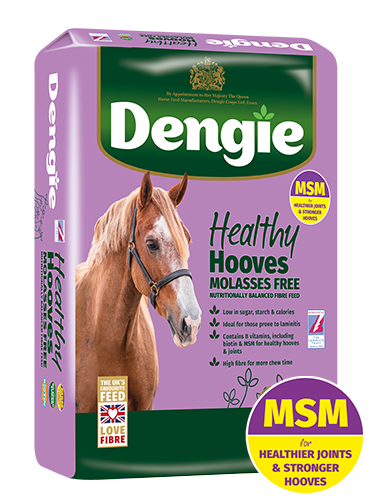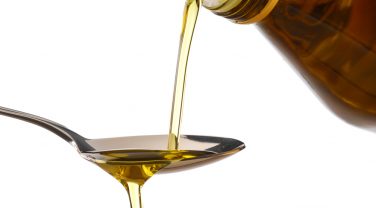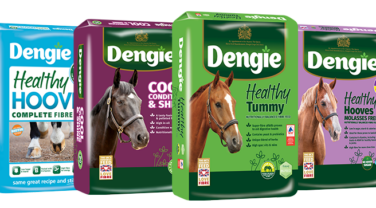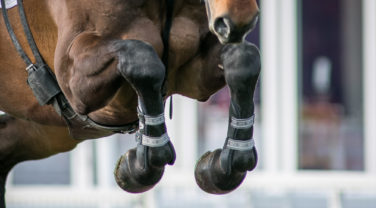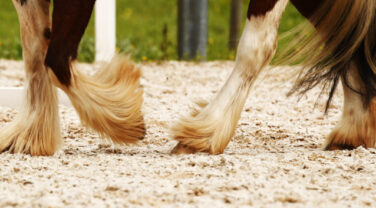
A Balanced Diet
Alfalfa is a rich source of many naturally occurring vitamins and minerals but it tends to reflect the soil it is grown on. As UK soils are low in selenium and copper, the plants that grow on them tend to be low in these nutrients too. This is why it is recommended to feed a vitamin and mineral supplement alongside a straight fibre horse feed to ensure the diet is balanced. To help make feeding simpler, we have created fibre feeds with added vitamins and minerals so that you don’t have to feed anything else.
What you need to know and do
- If using a straight fibre feed a supplement, balancer, mix or cube can be used to provide a balanced diet. They must be fed at the recommended amounts for the diet to be balanced
- The Healthy range of fibre feeds have vitamins and minerals added as well as other key ingredients, to provide a convenient way to provide a balanced diet. They must be fed at the recommended levels to provide a balanced diet
- If feeding less than the recommended amounts of the Healthy range add a balancer or supplement to top up
- If you don’t need the full amount of a mix or cube, change to a balancer or supplement for a balanced diet without as much energy
- Feeds that contain added vitamins and minerals are designed with horses with certain workloads in mind – using a lower spec feed for a horse in harder work may also mean they aren’t getting enough. Topping up with a balancer or supplement will help to counteract this.
Frequently Asked Questions
Shouldn’t a horse get everything they need from grass and hay – particularly good do-ers?
Whilst UK pasture and forage can supply many horses with plenty of energy or calories, typically it lacks certain trace minerals including copper, selenium and zinc and conserved forage e.g. hay and haylage also lacks vitamin E. Having a balanced diet is important for long term health and longevity. Zinc for example is important for hoof condition and whilst in the short term your horse may look great on just grass alone, a long term deficiency of zinc can result in poor hoof quality.
What’s the difference between a balancer and a supplement?
A balancer tends to be in the form of a small pellet and a supplement tends to be a powder although there are always exceptions to the rule. This usually means that the feeding rates of supplements are much lower than balancers – typically less than 100grms per day as opposed to 500grams per day for a balancer. This also often means that a balancer provides more of the macro nutrients such as protein and also energy – although a balancer is a low energy option compared to a traditional mix or cube, supplements tend to be even lower energy than balancers. The pellet format can be more convenient to feed – powders need to be mixed into something and often dampened. Supplements can offer really good value for money.
The key to doing a comparison is to look at the daily amount supplied – to establish this you need to know how much is in the product and the feeding rate. It’s also important to look at the other additives and ingredients the product contains – things like glucosamine are expensive to add so will push the price of the product up. A nutritionist can compare products for you if you’re not sure.
For example:
Product A contains 10 000 IU of vitamin E per kg and is fed at 50 grams per day
Product B contains 5000IU of vitamin E per kg but is fed at 100 grams per day
Product A provides 500IU vitamin E and Product B provides 500IU vitamin E per day – if you had just looked at the level of vitamin E in the product you might have thought that Product A was “better”.
Why do some feeds contain B vitamins and others don’t and why do the levels vary so much?
A healthy horse on a high fibre diet produces B vitamins when fibre is fermented in the hind gut and should be able to produce enough to meet their own requirements. Nutritionists tend to add B vitamins to feeds for horses that they expect to be receiving lower fibre intakes. This would typically be performance horses and also often good doers whose rations may be limited to control their bodyweight. Not every product for these types of horses will have B vitamins added though so do check – it’s one factor that determines the quality and price of products.
Levels of B vitamins vary because there are few recognised or published levels for horses – biotin is the exception to this in that it is generally accepted that 15-20mg improves the rate of hoof growth and possibly quality of hoof horn too. Some feeds contain what might be referred to as a maintenance level of biotin which could be around 2mg to 3mg per day. The levels of other B vitamins included is really down to the individual nutritionist to decide on.



